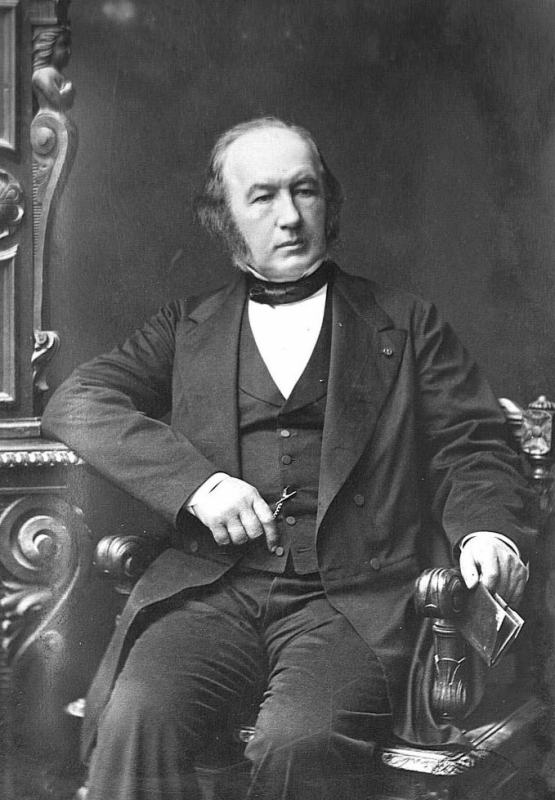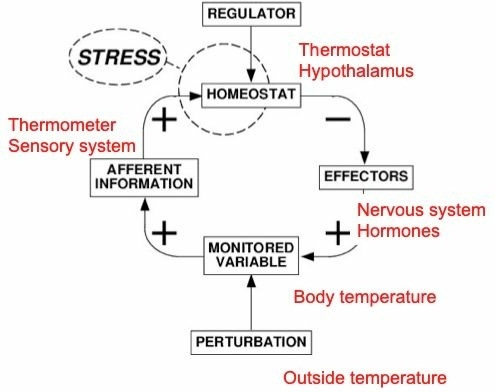
Having a clear idea of the definition of stress will allow you to take the first step on your journey to reduce stress once and for all. Are you suffering from stress? And have you tried many trics and techniques to reduce it? Chances are that you have not been successful. This is not your fault. It is because most experts focus directly on solutions, rather than understanding your problem first. It is important to understand what stress is, before trying to find ways how to reduce it. After reading this article you will understand what the definition of stress precisely is: a condition of the body that enables you to deal with problems.
Why knowing the definition of stress is important to reduce stress
Stress. Many seem to suffer from it, few know what it is. But you can still experience it. You may feel tense, irritable, overwhelmed, or very, very tired. These experiences are not stress. They can also be caused by other physical and mental problems. So, we have to know first to understand what stress precisely is, and where these feelings of stress come from. After that, you will be ready to think about your stress, and what you could do to control it better. Knowing the definition of stress is thus the basis of stress management. You will understand better what you have to do to reduce stress, and feel more motivated to follow a stress management strategy that suits your situation through to the end. You can then also monitor your progress.
So, without any further delay, let’s see what stress precisely is.
About sugar, the liver, and nerves
Defining stress has turned out not to be that easy. It has taken scientists over a decade to come up with a definition of stress, and with a concept that explains what stress is for, and why it can cause disease.

The concept of stress started with Claude Bernard in 1865. Unknown author, Public domain, via Wikimedia Commons
We have to go back to the year 1865. The famous physiologist Claude Bernard published in that year an article on two discoveries that he made. His first discovery was that the liver can secrete sugar into the blood. The second was that blood flow can change in adaptation to temperature, and that this is done by nerves.
What has this got to do with stress, I can hear you ask. Good question! You see, Claude Bernard was clever enough to combine both his discoveries into one theory. He figured that a temperature change of the skin activates the sympathetic nervous system, which then stimulates the liver to release sugar into the blood. In this way, it is possible to maintain a constant temperature of the body, independently of the temperature outside the body. In more general terms, he proposed that there are mechanisms in the body that help you adapt to your environment to keep your body in optimal shape.
As we know now, the activation of the sympathetic nervous system and the secretion of sugar from the liver is one of the most important stress reactions in the body! And we know that stress reactions indeed help to keep the body functioning well when external conditions change.
Stress is all about maintaining equilibrium
Claude Bernard’s concept was developed further by Walter Cannon in 1929 and 1939. He invented the term “homeostasis”, which more or less means “equilibrium”. He used this term to describe the maintenance within acceptable ranges of several physiological variables within the internal fluid. These variables include blood sugar, oxygen levels in the blood and body temperature. Thus, there is an equilibrium for sugar levels for example, that is controlled by the body. If sugar is low, you will feel dizzy, and your liver will start to release sugar into the blood. The sugar equilibrium will then be restored. If sugar is high, like after a meal, the hormone insuline will make sure that sugar is being taken up by the body (especially the liver), so that sugar levels fall to normal levels.

Walter Cannon introduced the concept of "homeostasis", or equilibrium in the body. Perturbation of homeostasis induces stress. Unknown author, CC BY 4.0, via Wikimedia Commons
To maintain homeostasis, or equilibrium, Cannon argued that the body should contain sensors to detect differences between the sensed value of a variable and its set acceptable value. If the two deviate too much, then effectors should come to action to restore the equilibrium. To get back to our example of blood sugar levels, there are sugar sensors in different parts of the body: in the pancreas, the gut, and some blood vessels. These sensors will signal in case of need that action is required to bring sugar levels back to acceptable concentrations in the body. Not too high, not too low.
You may want to compare this mechanism with a thermostat. For example, the body senses temperature constantly, and compares this with a set value of 37 °C. If the sensed temperature is too cold, the body will react by increasing its metabolism of brown fat and shivering. Both increase temperature to take it back to 37 °C. Also, blood vessels in the skin tighten to prevent heat loss, and more blood is diverted to internal organs as a result.

In the early 1900s, Cannon described for the first time the acute changes in the activity of the adrenal glands. These are hormone-producing organs that reside on top of the kidneys. These hormones include adrenaline (or epinephrine in the US) and cortisol, which are both released during stress. The acute changes in adrenaline release in response to a perturbation of the body's equilibrium when facing danger makes “fight-or flight” reactions possible. They allow you to fight off a threat, or to run away from it in order to protect yourself. Cannon rightfully believed that the increased activity of the sympathetic nervous system (described by Claude Bernard) and the adrenal glands would work together to restore homeostasis. Not only during dangerous times, but also during emotional distress, sugar imbalance, pain or temperature stress.
We now have a few pieces of the puzzle of what stress is. These are
1. that the body is normally in equilibrium (homeostase) and
2. that unbalances in equilibrium are corrected by the body through the sympathetic nervous system and the adrenal glands through the hormone adrenaline (epinephrine)
The General Adaptation Syndrome

The next big step towards the definition and understanding of stress was made by Hans Selye in 1956. While experimenting with mice, he observed that different stressful treatments led to very similar results. He found that the mice had enlarged adrenal glands (these are thus more active), reduced immune function (increased susceptibility to disease), and had developed gastrointestinal ulcers. These changes were mediated by the steroid hormone cortisol secreted from the adrenal gland. Selye grouped these similar pathologies together under the term “General Adaptation Syndrome”.
Here we have thus another component of the stress concept:
3. activation of the adrenal gland to release the stress hormone cortisol.
It was also Selye who took the term “stress” (meaning pressure) from the physical world to describe the condition of the body in which one or more variables (temperature, glucose, hormones, emotion, etc.) are out of balance. In other words, stress is the pressure on the body that needs to be counteracted to restore equilibrium (homeostasis).
Selye thus considered stress a condition of the body, and not a disease in itself. He distinguished three phases of stress:
1. The alarm phase.
This is the phase of becoming aware of the threat or disturbed equilibrium (which may occur unconsciously), and is immediately followed by Cannon’s “fight-or-flight” response. The sympathetic nervous system is switched on and adrenaline is released into the blood. The heart starts to pound, breathing goes faster and the muscles tighten.
2. The adaptation phase. This is the phase of resistance to the stressor (the factor that causes stress) and the adrenal gland starts to release a lot of cortisol to restore homeostasis (equilibrium). Cortisol supports the short-term actions of adrenaline.
3. The exhaustion phase. This phase only occurs when the adaptation phase has not been successful. Equilibrium has not been restored, and the stress reactions are prolonged. Especially cortisol levels in the blood remain high. This, according to Selye, can lead to disease. Eventually, the exhaustion phase can even lead to death. Indeed, Selye’s concept that prolonged stress can produce physical disease and mental disorders is now widely accepted.
We are getting closer to the definition of stress. This is where we are now:
Stress is a condition of the body, not a disease. The stress reactions in the body (activation of the sympathetic nervous system and the release of epinephrine/adrenaline and cortisol from the adrenal glands into the blood) help to restore equilibrium. Stress is good on the short term, but prolonged stress can lead to disease.
Still, there are two questions that remain:
1. Why are stress reactions apparently so similar, while stressors (the things that cause stress) are so different?
2. Are setpoints for physiological and mental variables really strict? If they are, our bodies would not be flexibel enough to adapt to many different situations that occur during our daily lives.
These questions bring us to the modern view of stress.
The modern view on stress
The answer to the first question concerning the similarity of stress responses in the light of the multitude of stressors we can encounter every day, was already given by Hans Selye himself. He stated that there are general components to each stressful situation and stress reactions (as in the General Adaptation Syndrome), but also that there must be reactions in the body that are unique to each stressor.
Selye also contributed to answer the second question of fixed or flexible setpoints. In 1956 he introduced the term “heterostasis” (from the Greek “heteros”, meaning other) to describe the establishment of a new equilibrium. This means that the setpoint for a given variable (temperature, pain, hormone, oxygen levels, emotions, etc.) can be changed, but only to resist unusually strong stressors that impose high demands on the body to restore homeostasis. A bit vague perhaps, but what Selye meant was a new equilibrium can only be formed by unnatural causes such as vaccination.
Although it is fair to say that Selye was on the right track here, in the sense that he was open to the idea that setpoints are not carved in stone, his concept was too simplistic. Later research has found out that setpoints can change, not only following medical intervention as Selye proposed, but also naturally.
Indeed, modern stress concepts view stress a consciously or unconsciously sensed threat to homeostasis, which has emerged from the early concepts from Bernard, Cannon and Selye. In contrast to these early concepts, it is now believed that stress responses have a degree of specificity that depends on
· The particular variable of which the homeostasis is disturbed (different stress reactions to restore sugar levels or body temperature for example)
· How the stress is perceived by an individual (some may be bothered by one type of stressor but not by others; this depends on personality)
· The abilities of each individual to cope with a particular stressor
Also, whereas the term “homeostasis” suggests fixed setpoints for physiological and mental variables, these are now recognized to be variable. For example, body temperature naturally changes throughout the day. The same is true for heart rate and blood pressure. They are different when you sleep and rest as compared with when you are awake and walking around.
Therefore, stress reactions themselves can change the values of setpoints, to find a new equilibrium that is optimal for the adaptation to the stressor. For example, your body will change the setpoint for certain parameters when you travel from sea level to places of high altitude (related to oxygen uptake and distribution in the body), or when you go from sunny California to ice-cold Alaska (temperature stress).
Allostasis and allostatic load
To extend the concept of homeostasis and to accommodate the notion of flexible setpoints, Sterling and Eyer introduced the term “allostasis” in 1988. The adaptation of the setpoints is fundamentally different from Selye’ concept “heterosasis”, because allostasis correctly concerns adaptation of setpoints by the body, and not as one that can only be induced by medication or vaccination.
So here we have it! We now know what stress is!
The definition of stress: a condition of the body (not a disease) in which certain variables (be they physical or emotional) are out of balance and that need adaptation to restore equilibrium or to set a new equilibrium.
The values that define equilibrium may, however, change. This means that stress can induce a new equilibrium to deal with the stressors in the best and most efficient way to protect your health and wellbeing.
If adaptations through allostasis do not play out well, and you do not manage to adapt to the stressor, then your health might be in danger. For example, chronic elevation of blood pressure to ensure sufficient blood flow to the brain during stress might eventually lead to atherosclerosis and stroke or coronary occlusion. Risk of such adverse effects has been termed by McEwen in 1998 “allostatic load.” Thus, a high allosteric load refers to stressors that require much effort for the body to restore equilibrium, or to set a new one if that makes adaptation easier or better. These are the stressors that put health at risk. Stressors with a low allosteric load are easier to deal with and will generally not lead to disease.
What can we do now that we understand stress?
You now understand that stress is a condition of the body that helps you to deal with problems. You will thus also understand that stress should not always be looked upon as something negative. Isn't it wonderful that your body has a built-in system that helps you to solve problems? The only downside of stress is that it can damage health if it lasts too long or when the stressor takes too much toll to deal with (a high allostatic load).
It is now time to become more specific as to what the benefits are for you to reduce stress now that you understand what stress is.
Stress reduction can occur on three levels:
1. Treating symptoms to restore or set a new equilibrium
Allostatic stress reactions come in different forms and sizes. Knowing what they are and when they occur makes specific treatment possible. For instance, in the example we mentioned earlier of high blood pressure to supply the brain with more blood, it may help to take medication to reduce blood pressure. In case of psychological stress, you may want to seek psychiatric counsel to restore emotional homeostasis.
2. Identifying stressors
When you know which stress reactions occur, you can easily recognize them, so that you know you are under stress. Most stressors in our human society are of psychosocial nature. Think of problems at work or perhaps in your relationship in your private life. These stressors invariably have an impact on your brain. The brain is the site of the body where stressors are perceived and where the stress reactions begin. You should be on the lookout for changes that reflect altered brain function because of stress. For example, you could keep a diary in which you note the quality of your sleep, any concentration problems you might have, or when you feel agitated (just to name a few). Also, you could note accelerated heart rate or increased breathing frequency, and in which circumstances they occur. These alterations are caused by stress hormones, which serve to supply the brain and muscles with more blood to prepare you for fight-or-flight reactions.
3. Reducing stress early or even preventing stress
Finally, the Holy Grail! Understanding stress and realizing what causes it (i.e. the stressors that cause disequilibrium) both help to reduce stress as soon as it presents itself. Or, even better, recognizes the causes before they happen can even prevent stress all together! The latter particularly applies to stress at work, because there are quite a few working conditions known to cause stress. Whenever you see these start to occur, you can immediately intervene and protect your health and that of your colleagues!
Personality and stress
How stressful events are being perceived varies from person to person. Some might be stressed when working in an open workspace, whereas others are not. Some have many abilities to deal with stressors, whereas others have not. The measures to reduce stress will thus depend on the personality of each of us.
In addition, some of you may respond primarily with adrenergic responses, and some may respond rather with cortisol responses to bring about allosteric adaptions to deal with a stressor. This will influence how your body will restore or set a new equilibrium.
Stress sensitivity and stress reactions may depend on:
- Genetic factors
- Developmental factors (including upbringing and aging)
- Previous experience
The technique you will choose to reduce your stress will depend on the stressor at hand, your personality profile, and the type of stress reactions will occur. There is therefore no “one size fits all” solution to reduce stress, as many stress gurus on the Internet seem to promise. This is one of the reasons why most stress reduction programs fail.
How Stressinsight helps
Understanding stress, knowing what causes stress, personality profiles, stress at work…… It may seem complicated to figure all these out by yourself. After all, you may not be a medical doctor, a biologist, a psychiatrist or a business analyst. And certainly not all in one. How on Earth can you figure all of this out efficiently and quickly?
You would have to go through scientific literature and reports written by psychologists and experts in business organization. Many scientific journals and reports are only available through expensive subscriptions, and are difficult to read for those who are not experts.
A much easier and cheaper way is to take our course "Surmounting Stress". In the course you will learn all there is to know for efficient stress management. From understanding what stress is to knowing the causes, symptoms and consequences of stress, and finally to stress management techniques that are adapted to your situation and your personality. You will also have access to our community, where you can discuss and exchange ideas with like-minded people. And you will have direct access to us if you have questions.
Why not check the Surmounting Stress out, and start reducing stress right now? If you click the sign up button at the top of the page, you have immediate access to everything you need to manage your stress. You will also have direct access to Stressinsight experts and be able to interact with others in the community who, like you, are looking for the best and quickest way to reduce and prevent stress.
